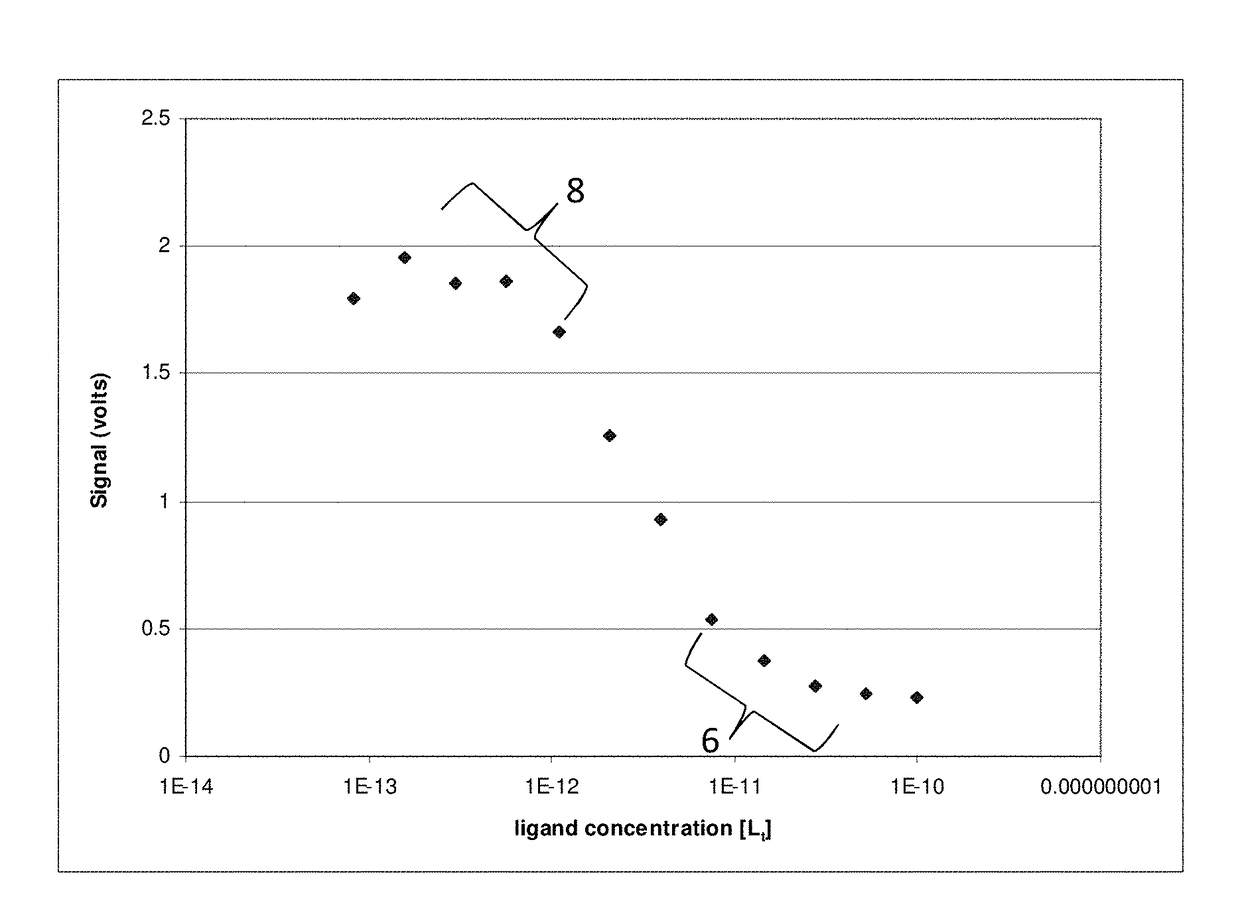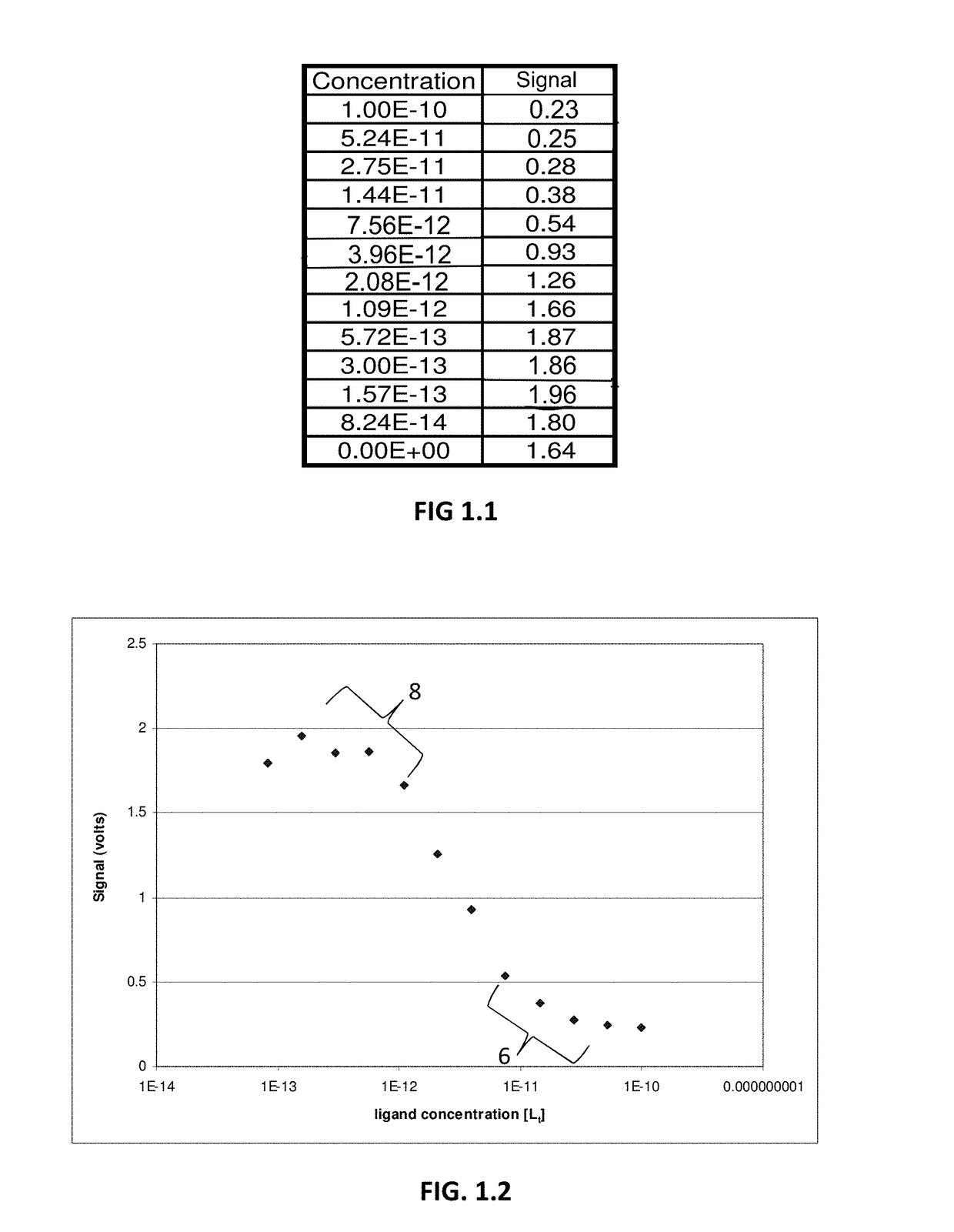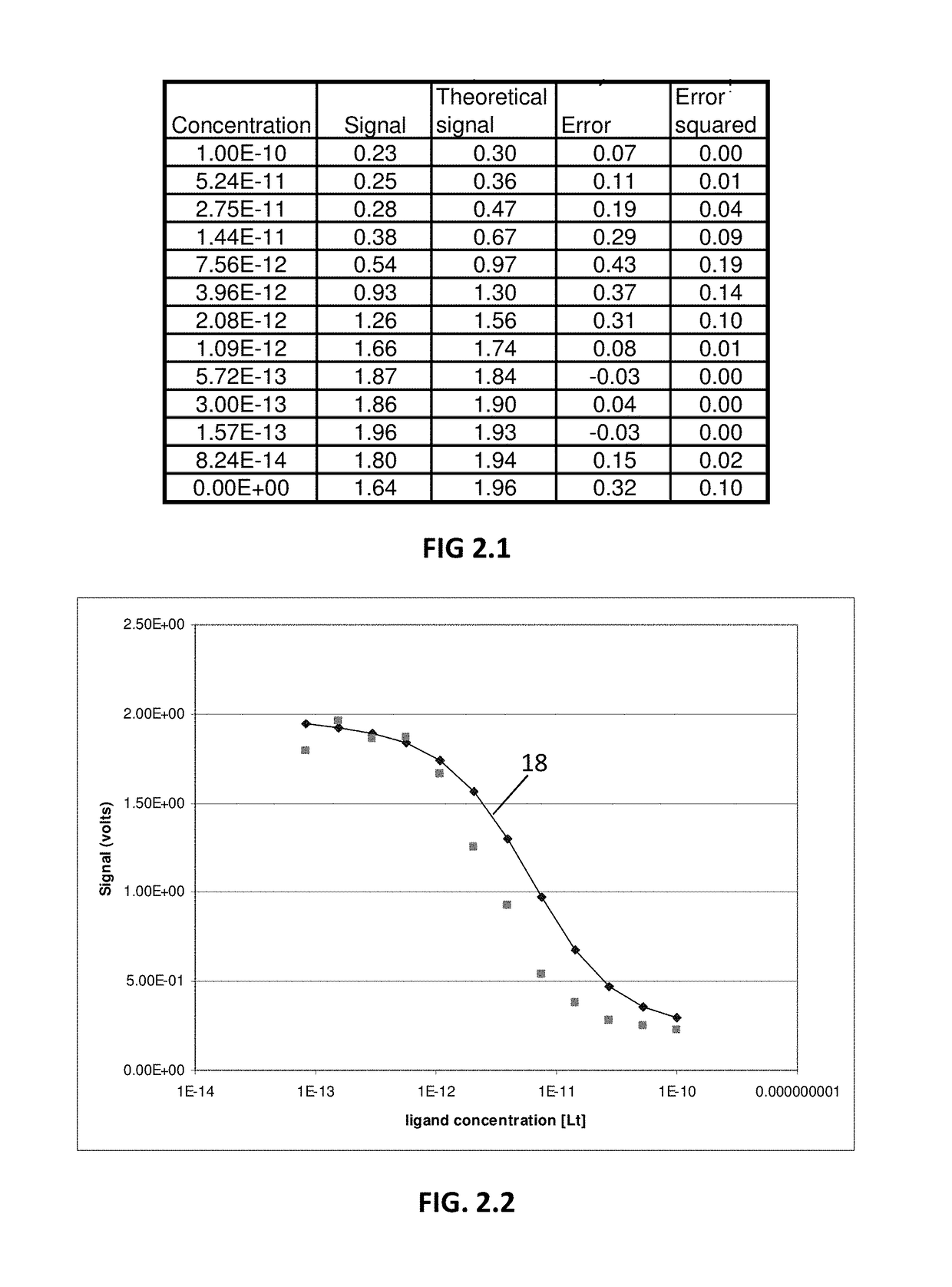Binding assay
a technology of binding assay and assay, applied in the field of binding assay, can solve the problems of difficult cell culture, high cost, and inability to add a second curve, and achieve the effects of saving time, less material, and fewer materials
- Summary
- Abstract
- Description
- Claims
- Application Information
AI Technical Summary
Benefits of technology
Problems solved by technology
Method used
Image
Examples
Embodiment Construction
[0055]An example of the concept described in the above Background section is provided in FIGS. 1.1-9.
[0056]FIGS. 14-17.2 depict a whole cell dual n-curve analysis according to the above experimental description but in which the lower knee of each curve has not been determined through experimental measurement and subsequent iterative analysis as described above. Instead, an NSB measurement taken from a solution free of the receptor has been utilized in the iterative analysis described above. Utilizing the NSB measurement the analysis was able to resolve the curves 85, 86 as though actual measurements had been taken through the entire curve range and lower knee of the curve without actually having to utilize the full range of materials and time needed to conduct the experiment through these values. The analysis provided for a resolved Kd 81 and Rt 83 both with reasonable certainty and comparable to the Kd and Rt determined in FIG. 12. The benefit of this analysis is it allowed far few...
PUM
| Property | Measurement | Unit |
|---|---|---|
| binding constants | aaaaa | aaaaa |
| concentration | aaaaa | aaaaa |
| concentrations | aaaaa | aaaaa |
Abstract
Description
Claims
Application Information
 Login to View More
Login to View More - R&D
- Intellectual Property
- Life Sciences
- Materials
- Tech Scout
- Unparalleled Data Quality
- Higher Quality Content
- 60% Fewer Hallucinations
Browse by: Latest US Patents, China's latest patents, Technical Efficacy Thesaurus, Application Domain, Technology Topic, Popular Technical Reports.
© 2025 PatSnap. All rights reserved.Legal|Privacy policy|Modern Slavery Act Transparency Statement|Sitemap|About US| Contact US: help@patsnap.com



